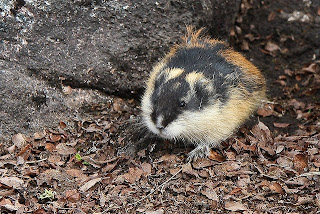Not all bugs are bad for plants. Learn what makes some insects beneficial to your garden, some common beneficial bugs, and how to attract beneficial insects.
When you see a bug on your flowers, do you immediately grab the insecticide? Think again. Some insects kill common garden pests, help aerate and fertilize the soil, and pollinate your flowers. These beneficial insects are actually a form of do it yourself pest control.
Common Beneficial Insects
Lady Bugs
(or Lady Beetles) are easily recognized by their orange color and black spots. They eat aphids, which are frequent garden pests. Ladybug larvae, though not as easily recognized, eat as many as 40 aphids per day, making them tops in the beneficial category.
Praying Mantises
ambush and eat any kind of insect. Because they’re territorial, you aren’t likely to see a large concentration of praying mantises in any one garden. But the ones you do see are powerful predators that will benefit your garden.
Tachinid flies and parasitoid wasps (such as trichogramma wasps), though tiny, have a tremendous impact on the garden because they destroy many caterpillars, which feed on plants. They actually insert eggs inside the body of a caterpillar, and the larvae feed on the caterpillar host.
Bees spread pollen as they go from flower to flower. Pollination is important for ornamental flowers, but it’s also vital for many fruits and vegetables that depend on cross-pollination, such as squash, raspberries and fruit trees.
.
Lacewings
have delicate transparent wings and green bodies. Both the larvae and the adult stages eat a variety of pests that you don’t want in your garden. The larvae actually latch onto insect eggs and soft bodied insects to suck them dry
Hover flies, also called syrphid flies are often seen hovering over flowers in the early spring and fall. The larval stage feeds on aphids, and the adult stage pollinates flowers.
Spiders, though not technically insects, are beneficial predators as well. Large orb weavers are commonly seen in the fall, but smaller spiders remain active all summer long. Not all spiders weave webs. Some prowl on the ground, searching for soft-bodied insects, while others create lairs to hide in while watching for prey.
Earthworms, which are also not technically insects, play an important role in aerating the soil, which is necessary for root and plant growth. They also help break down leaves into rich garden soil.
Pros and Cons of Using Beneficial Insects for Organic Pest Control
Many gardeners prefer to use beneficial insects rather than spraying their garden with unnatural and potentially harmful chemicals. However, relying on beneficial insects alone may mean you have to tolerate some damage to your plants. It’s a choice each gardener needs to make.
Attracting Beneficial Bugs to Your Garden
Plant a variety of flowers that will bloom all summer, including drought-resistant native wildflowers that will withstand potential rainless times in late summer. Many beneficial insects feed on nectar and pollen, so you may want to put out a small saucer of sugar water to supplement nectar, especially when rain is scarce. Make sure you change the water often to avoid stagnation.
Avoid using broad-range pesticides, which kill the good bugs along with the pests. Choose a less toxic product, such as insecticidal soap, and apply it in the evening, when the beneficial insects are less active. When possible, chose insecticides that target specific pests.
Buying Beneficial Insects
Biological supply houses sell beneficial insects of various types. You can purchase predators that feed on a wide variety of garden pests or choose insects and other organisms that target specific pests that might be a problem in your garden.
Relying on beneficial insects may take a little more patience, but it’s a satisfying way to garden without using chemicals and upsetting the balance of nature.
This article was originally published at Suite101
here.



























